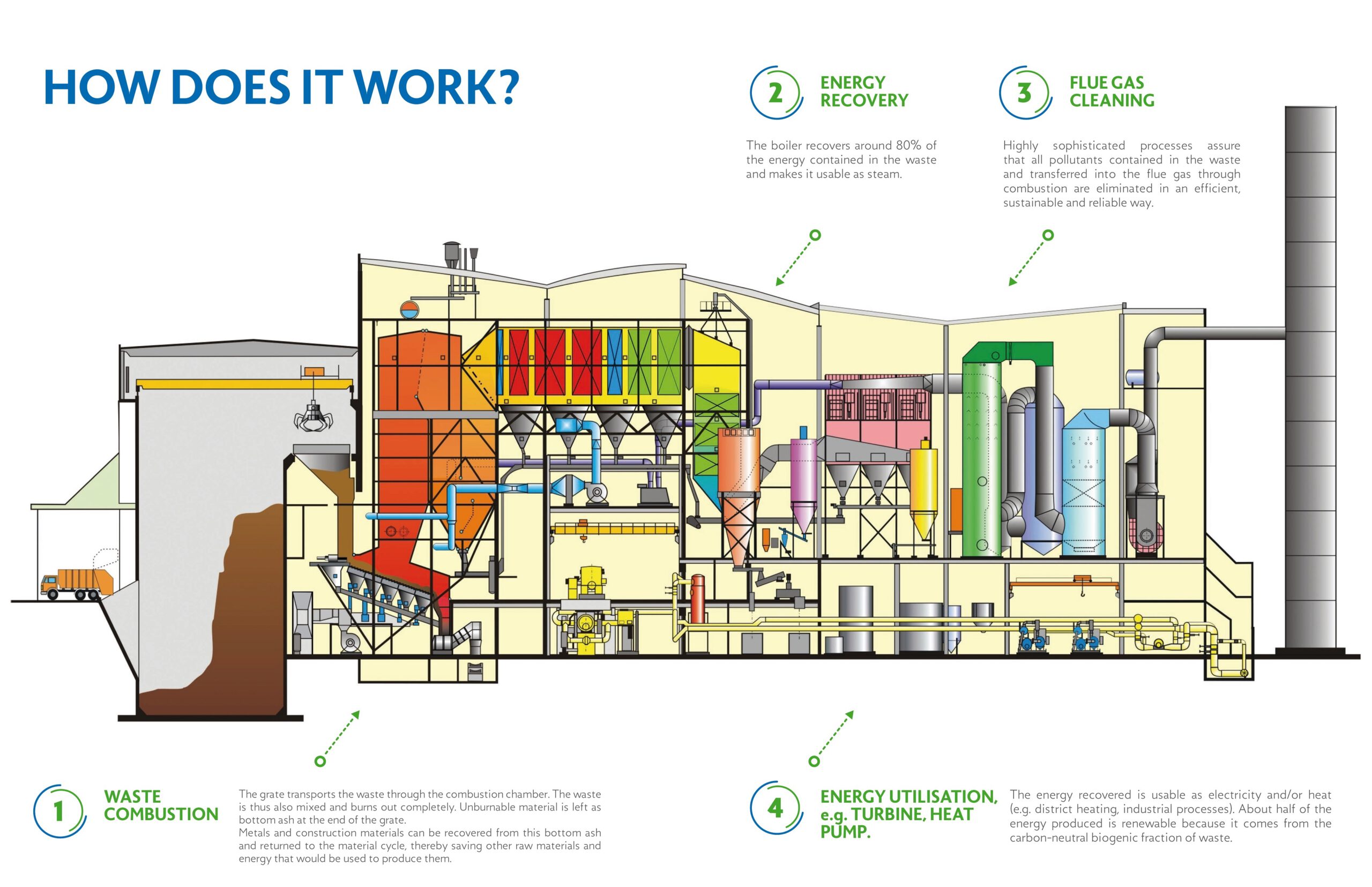Waste-to-Energy plants are designed to treat non-recyclable Municipal Solid Waste and other accepted industrial or commercial waste. Simultaneously, the plants recover energy and materials and remove the pollutants from the eco-cycle thanks to very stringent flue gas cleaning processes.
Waste-to-Energy plants treat non-recyclable waste (the so-called “residual waste”): waste which is not fit for re-use or recycling. For instance, polluted waste, degraded waste after several recycling rounds, and waste made up of composite materials.
Waste-to-Energy or Landfills?
In 2019, the European citizens generated around 225 million tons of municipal waste. Residual waste – unfit for recycling or reuse – counted for slightly more than half (114 million tons) of the total amount. This kind of waste can be only treated by Waste-to-Energy technologies or sent into landfills.
The diversion of waste from landfills means avoiding the production of methane emissions (a greenhouse gas up to 84 times more potent than CO2 over a 20-year period) and saving valuable land with no water and soil pollution risks.
The potential of landfill diversion to reduce greenhouse gas emissions should not be underestimated: between 1995 and 2017, while the total amount of municipal waste treated increased by 13%, the amount of landfilled waste fell by 60% and greenhouse gas emissions from waste dropped by 42% .
Energy and Materials from Non-Recyclable Waste
Electricity and Heat
The energy recovered by Waste-to-Energy plants is used to power and heat thousands of houses, offices, schools, hospitals and industries. 18 million European citizens receive annually electricity, and 15 million receive heating recovered from WtE plants. For example, almost 50% of the district heating network of Paris is supplied by energy recovered from non-recyclable waste.
Steam
The steam recovered by Waste-to-Energy plants is used for industrial purposes and replaces fossil-fuel-fired boilers, thus saving CO2 emissions.
Secondary Raw Materials
The extraction of materials from the bottom ash or their separation before waste is treated prevents the unnecessary extraction of primary raw materials. These materials are metals and minerals (iron, steel, aluminium, copper, and also precious like silver and gold..). The remaining part of the bottom ash is used for several products such as road construction materials, additives to cement raw materials, concrete manufacturing, etc.
For these and many other reasons, Waste-to-Energy is an essential feature of sustainable waste management in Europe!



